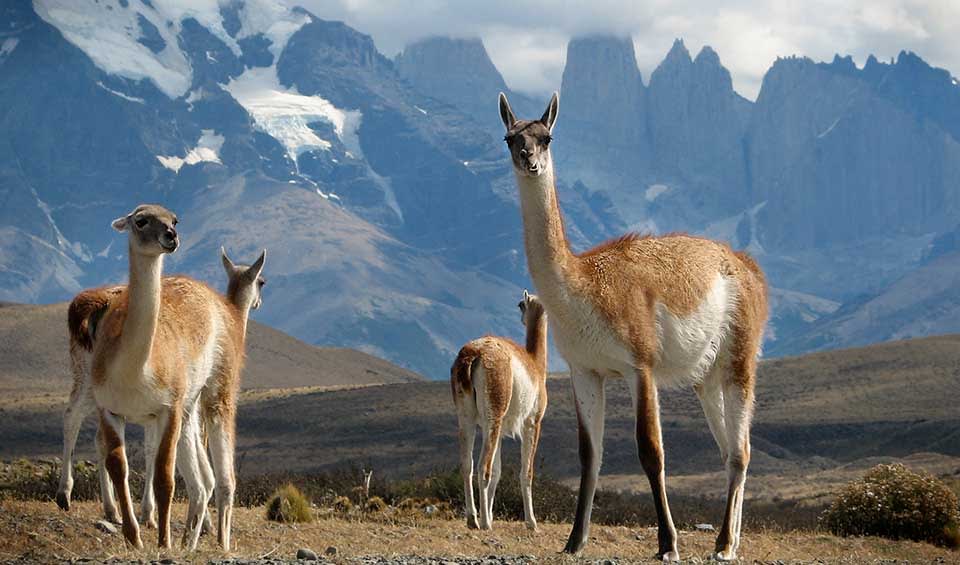As a member of the camelid family, it shares a lineage with its more famous relatives, the camels of Africa and Asia, and with its closer cousins, the vicuña, llama, and alpaca.
Adapted to the harsh conditions of the Andean plateaus and mountains, guanacos exhibit an extraordinary ability to endure long periods without water, a trait that is crucial for survival in arid and semi-arid regions where water sources can be scarce. Their dietary flexibility complements this high thirst tolerance. Guanacos are primarily herbivores grazing on a variety of grasses, herbs, and other plant materials. Their ability to digest a wide range of vegetation allows them to subsist in environments where food sources may be limited or vary dramatically with the seasons.
Behaviorally, guanacos are complex and fascinating creatures. They are known for their variable temperaments, displaying aggression in certain situations, particularly during mating seasons or when threatened. Despite this, guanacos are generally shy and elusive, preferring to keep a distance from potential predators, including humans. This wariness is a key survival strategy in the open landscapes they often inhabit, where the ability to detect and flee from threats at a moment’s notice can mean the difference between life and death.
Guanaco populations are currently considered strong and stable, a status that reflects the success of conservation efforts in some regions and the inherent adaptability of the species. Unlike many wildlife species that are facing the dire impacts of habitat loss, climate change, and human encroachment, guanacos have managed to maintain healthy populations across much of their range. However, this does not mean they are without threats. In certain areas, competition with livestock, habitat degradation, and illegal hunting pose significant risks to local guanaco populations.
Distribution
 Argentina
Argentina Official estimate
Official estimate
 Bolivia
Bolivia Official estimate
Official estimate
 Chile
Chile Official estimate
Official estimate
 Falkland Islands
Falkland Islands Paraguay
Paraguay Official estimate
Official estimate
 Peru
Peru Official estimate
Official estimate
Anything we've missed?
Help us improve this page by suggesting edits. Glory never dies!
Suggest an editGet to know me
Terrestrial / Aquatic
Altricial / Precocial
Polygamous / Monogamous
Dimorphic (size) / Monomorphic
Active: Diurnal / Nocturnal
Social behavior: Solitary / Pack / Herd
Diet: Carnivore / Herbivore / Omnivore / Piscivorous / Insectivore
Migratory: Yes / No
Domesticated: Yes / No
Dangerous: Yes / No




